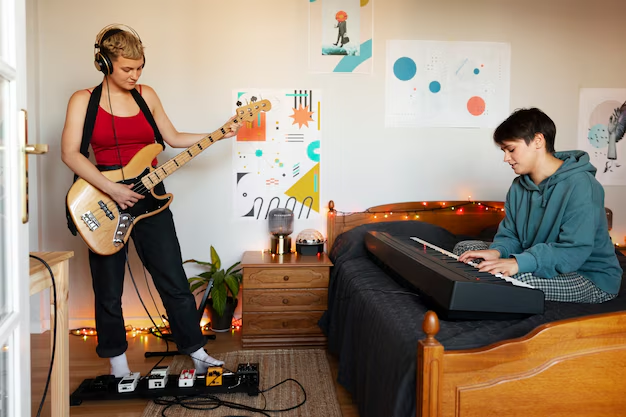The evolution of music has always been marked by innovation and change, influenced by the cultural, social, and technological forces of each era. From the intricate compositions of classical music to the diverse sounds of contemporary genres, the journey of music has been nothing short of transformative. This article explores how music has shifted from the structured, formal styles of the Classical period to the wide-ranging styles that dominate today’s music scene.
The Classical Era: Structure and Precision
The Classical period (1750-1820) was defined by composers like Wolfgang Amadeus Mozart, Ludwig van Beethoven, and Franz Joseph Haydn, who revolutionized the way music was composed and performed. Classical music is characterized by its clear structure, balance, and form. Symphonies, sonatas, and concertos were often written with strict rules regarding harmony, rhythm, and melody, showcasing the virtuosity of both composers and performers.
This era also saw the emergence of orchestral music as a dominant form, with large ensembles of musicians performing intricate compositions in concert halls. The relationship between melody and harmony was central to the classical style, with composers aiming to create elegant, logical musical statements. The use of dynamics, phrasing, and counterpoint provided a foundation for later developments in Western music.
The Romantic Era: Emotion and Individualism
As the 19th century unfolded, composers began to embrace individualism, emotion, and expression. The Romantic period (1800-1910) was a response to the more restrained Classical style, emphasizing personal emotion, imagination, and the exploration of new sounds. Composers such as Franz Schubert, Johannes Brahms, Pyotr Ilyich Tchaikovsky, and Richard Wagner expanded the emotional range and depth of music, with symphonic works becoming more dramatic and expansive.
During this time, orchestras grew in size, and composers pushed the boundaries of musical form, creating highly complex and expressive works. Opera became a focal point, with composers like Verdi and Wagner revolutionizing the genre through their use of leitmotifs and complex character development within their music. The increased use of chromaticism, dissonance, and rich orchestration created a more intense, emotional listening experience.
The Early 20th Century: Modernism and Experimentation
The early 20th century marked a dramatic shift as composers began to experiment with new ideas in harmony, rhythm, and form. The rise of modernism challenged the traditional boundaries set by earlier composers. Figures such as Igor Stravinsky, Arnold Schoenberg, and John Cage pushed the limits of tonality, often embracing atonality, irregular time signatures, and unconventional instrumentation.
The influence of modernism extended beyond classical music, impacting jazz, folk, and eventually popular music. Composers such as Stravinsky, with his groundbreaking work The Rite of Spring, and Schoenberg, with his twelve-tone technique, embraced dissonance and chaos, which were revolutionary at the time. Meanwhile, composers like George Gershwin began blending classical traditions with popular music, creating the genre known as “American music.”
The Rise of Contemporary Music: Diversity and Fusion
Today, the landscape of music is incredibly diverse, reflecting a globalized world where genres blend and influence one another. From pop, rock, and hip-hop to electronic music, world music, and experimental genres, contemporary music incorporates elements from across the spectrum of musical traditions. Technology has played a massive role in this shift, as the rise of digital tools for production and distribution has transformed how music is made, shared, and consumed.
Genres are no longer confined to traditional labels, and many contemporary musicians draw from a wide range of influences. For example, artists like Kendrick Lamar mix rap with jazz, while others such as Kanye West blend classical orchestration with hip-hop. The accessibility of music production software has democratized music creation, allowing artists from all backgrounds to produce their own work. The rise of streaming platforms and digital media has also changed the way audiences discover and engage with music, leading to the explosion of independent artists and niche genres.
The fusion of genres is perhaps one of the defining features of contemporary music. Where classical and romantic composers once adhered to strict forms and rules, today’s musicians embrace hybrid styles that draw from classical, jazz, rock, electronic, and even folk traditions. This cross-genre approach is not just a stylistic choice, but a reflection of a larger cultural movement that values diversity, creativity, and experimentation.
Conclusion
From its origins in the highly structured classical compositions to today’s experimental, genre-defying sounds, the journey of music has been one of constant innovation. Each era has contributed to the broad and varied musical landscape we experience today. As we continue to move forward, it’s clear that the world of music will continue to evolve, driven by new technological advancements, global influences, and the ever-changing tastes of listeners.

